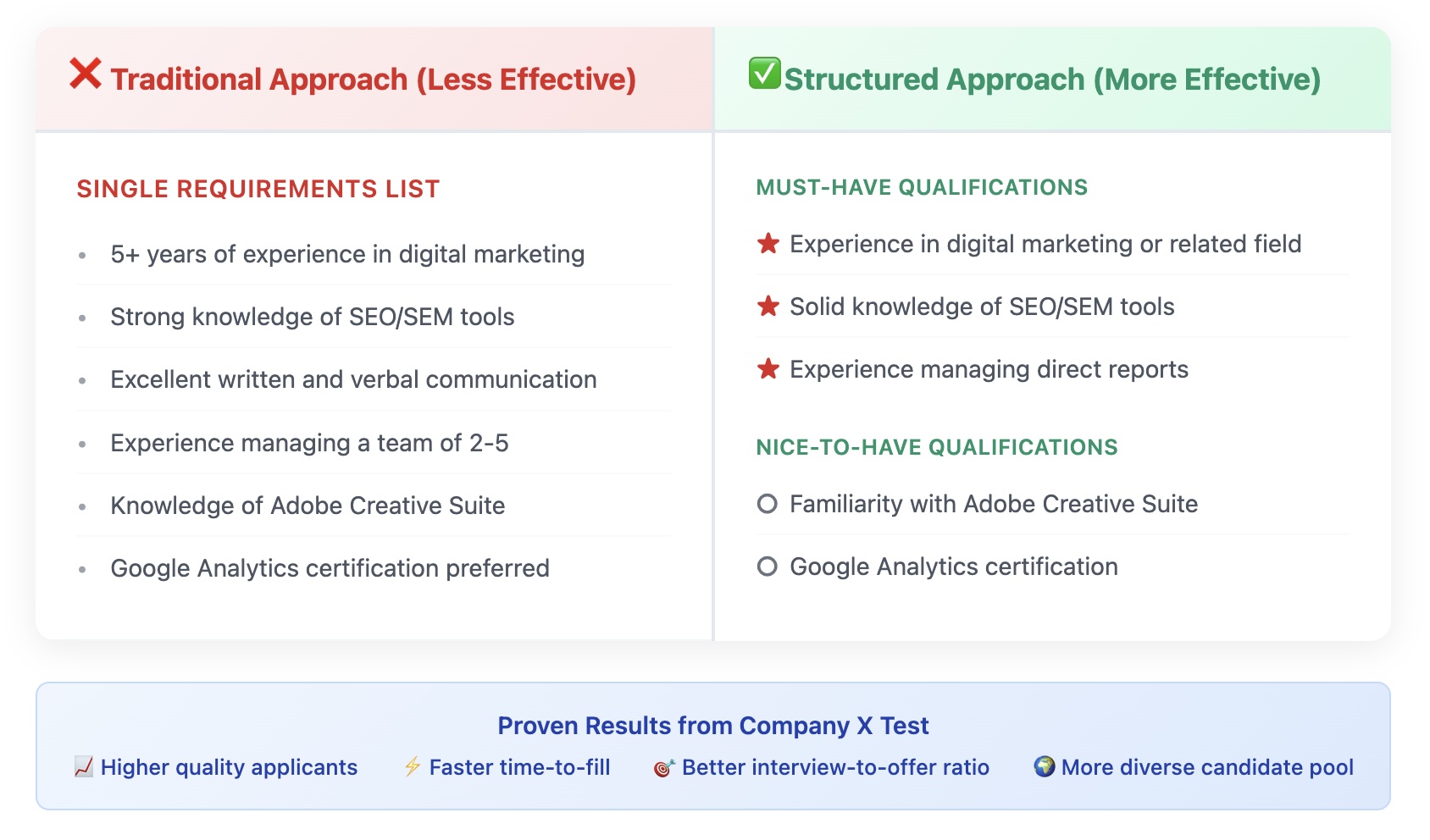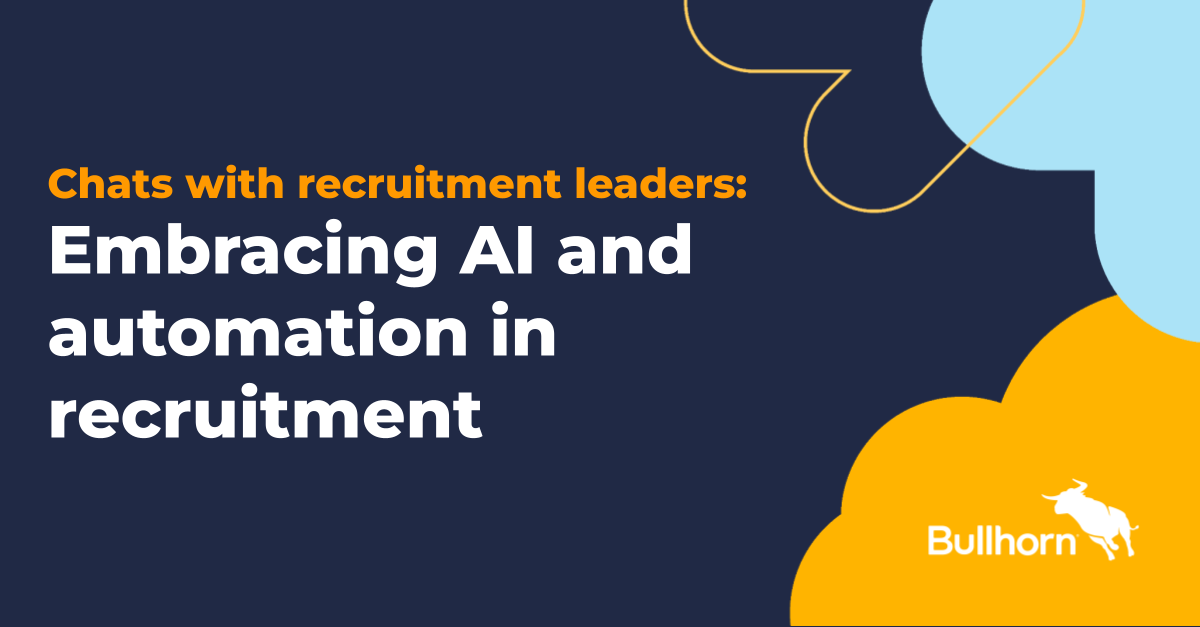A solid recruitment pipeline is the key to smart, consistent hiring. Many companies rush to fill roles at the last minute. Top-performing organizations, however, focus on building a talent pool well in advance.
Take Google, for example. . They’ve been playing the long game since day one. Their not-so-secret weapon is a strategic hiring process that starts way before they need to fill a seat. (And yes, this is why they get over 3 million applications annually and recruit just the top 1%).
Having a strong recruitment pipeline means you’re not scrambling to hire. Instead, you can focus on finding and securing the best talent before competitors even know they’re available.
In this guide, we’ll break down exactly how to build your pipeline from scratch. You’ll learn why it beats reactive hiring every time, and how to set it up without losing your mind.
Get ready to win over top talent every time.!
Suggested read: 30+ Must-ask Screening Interview Questions to Find Top Talent
What is a Recruitment Pipeline?
So, how do top companies consistently hire great people? They use a clear, organized recruitment pipeline to track and manage potential hires from start to finish. Simply put, a recruitment pipeline is your step-by-step plan for finding and hiring great people.
It begins when potential candidates first hear about your company and extends through stages like screening, interviews, and job offers.The best ones advance, while others stay in the pool for future roles. This is a ‘proactive recruiting strategy’ which opens a wide net before the perfect catch.
A well-designed recruitment pipeline streamlines your hiring process, saves time, and ensures a steady talent pool. It also unlocks several key benefits for your business, including:
✅ Better ROI: You spend less on urgent job posts and recruiting agencies because you already have qualified candidates lined up. Better hires mean higher retention rates and pre-vetted candidates cut down on the last-minute hiring costs that eat into your budget.
✅ Efficiency: Teams remain productive because positions don’t stay empty for months. When someone leaves, you have potential replacements already in mind, interviewed, and ready to start. So, you have constant access to qualified candidates, which means smoother onboarding and less disruption to your workplace.
✅ Strong Reputation: Good candidates talk to other good candidates. When your hiring process is clear and professional, word gets around. Every person who goes through your pipeline—hired or not—walks away with an impression of your company. Make it count, and watch how it transforms your employer brand.
A Step-by-Step Guide to Building a Recruitment Pipeline
Enhance your recruiting process in the long run with the step-by-step process.
1. Build Your Employer’s Brand
It’s good to reevaluate your employer brand before expanding your pipeline. This can solve much of your legwork by attracting proper candidates to your pipeline. Your employer brand may also be the factor that attracts and retains applicants when you begin to establish and cultivate relationships with them.
👉 Have a look at Eventbrite’s webpage, which connects job applicants to its recruitment team and shows its dedication to hiring top talent. The realistic and humorous profiles include fun facts about each recruiter.
While your career website is obviously crucial, consider more than just that. Every post, tweet, or review—even from your own team shapes how candidates see you. Focus on these key strategies for an effective employer brandl.
- Online reputation matters: Job seekers often check online reviews before deciding. Share positive internal reviews and testimonials to strengthen your company’s online reputation.
- Content is Key: You should consistently post content highlighting your company’s culture and values. Consider sharing photos, videos, and articles that provide insight into daily life at your workplace.
- Leverage social media: Regularly update your LinkedIn, Facebook, and other platforms to stay visible to top-tier talent. Creating fresh and relevant content helps make your brand stand out.
2. Identify Your Team Targets and Goals
Recruiters can create recruitment pipelines based on several companies’ long-term hiring objectives. These goals could include employing a set number of applicants or hiring for particular roles or competencies.
For instance, throughout the following two years, a company may decide to hire 10 seasoned managers and 50 entry-level workers. Understanding these goals will enable you to concentrate on the ideal quantity or kind of applicants and advance them through the pipeline once you’ve recognized that they satisfy particular qualifications.
Implementing OKRs (Objectives and Key Results) is an effective way to set recruitment targets and goals. It sets clear, measurable goals that directly align with your business’s overall direction.
| Is your team’s potential being held back by scattered goals? 🌟
With Peoplebox OKR, you can bring clarity, focus, and alignment to every level of your organization. Our platform offers real-time progress tracking, automated insights, and seamless integrations with your favorite tools, so your team can stay on top without missing a beat. Set, track, and achieve ambitious goals together with Peoplebox. Start driving growth that truly matters! |
3. Source Candidates
Candidate sourcing is basically searching for qualified candidates. Through this process, you can connect with potential applicants who could be added to your recruitment pipeline for future openings.
There are many strategies to maximize the quantity and caliber of candidates you locate and advance in the pipeline. For a successful approach, try combining different approaches:
1. Social media platforms: Approximately 62% of the world’s population are social media users. So, leverage this to tap into a broad talent pool. You can post job openings and encourage followers and others to apply. You can also look for applicants on professional networking sites, where individuals might occasionally share their work history or offer to be contacted by recruiters.
👉Look at AirBus’s innovative career page with employee testimonials for a better impact.
2. Online job boards: Online job boards allow you to advertise job openings and descriptions at your company. Interested candidates can apply directly for these jobs on these platforms, and some even enable resume uploads to aid in your search for suitable applicants. For example, platforms like Indeed, LinkedIn, and Glassdoor let companies post their job listing where candidates can directly apply.
3. Referrals: Referrals let you find prospects based on the suggestions and knowledge of current employees. Employees who know your company and its values or objectives will recommend applicants they think fit. Many companies incentivize referrals to encourage and reward existing employees.
4. Networking events: You can attend networking events to meet possible prospects and personally compile resumes for examination. Depending on how you want to manage the recruitment, you can decide on events in your sector or a particular group, such as recent graduates. For example, you can utilize happy hour networking, workshops, and career fairs to bring in top talents.
5. Recruitment databases: A recruiting database you construct and maintain can include details on candidates who have applied to positions at your company. Reviewing these candidates’ credentials will help you find qualified ones depending on their abilities, background, or other criteria when a job opening presents itself. You can even create a community similar to Microsoft’s Alumni Network to have a database of past employees for quicker onboarding.
4. Process Applications and Shortlist Profiles
Once you have prospects, you can review their application materials—including cover letters and resumes. This stage lets you determine whether applicants satisfy the basic requirements required to advance to the next level of hiring.
For instance, if you are looking for a manager, you might directly move candidates with at least five years of experience to the screening or interview stages in your recruitment pipeline. This way, you’re only advancing candidates who already meet certain key qualifications, making the process smoother and more targeted.
You can save the resumes and applications of these candidates on file; you will need them for the following employment positions.
Until a qualified job opens up, these contenders can stay in the first stage of the hiring process. For instance, even if a candidate does not have the background required for a sales manager post, you could find that their training and abilities fit a sales representative job later on.
💡Pro tip:
Do not use your own “Disqualified” step in the recruitment funnel. To keep candidates in the stage they’ve reached while still distinguishing them from qualified applicants, you can use the “disqualify” option on their profiles. This action allows candidates to stay in their current stage but marks them as disqualified, effectively organizing your pipeline by separating these candidates from active prospects.
5. Build a Talent Pool
A talent pool is an HR database that includes sourced or referred prospects, past applicants for jobs at your company, and other possible employees. You can build a talent pool to help fine-tune your hiring process and pick the best candidates.
You can enhance your talent pool by taking extra steps, such as checking candidates’ backgrounds, assessing candidates during the application process, and regularly removing outdated data. It is equally important to have a diverse talent pool. For example, you can consider sourcing students from marginalized communities.
6. Track Recruitment Metrics
You should keep track of several recruitment metrics while building a recruitment pipeline. Like,
🎯Time to hire: Time to hire is an important recruitment metric for every company, including staffing agencies. Monitoring this metric can help you identify areas for improvement in your hiring process.
Formula: Time to hire = Hiring day - Day of applicant’s first contact
🎯Nature of hire: The quality of hire metric determines how well new hires satisfy their work criteria. Recruiters can assess this statistic by looking at retention rates, performance ratings, and training expenses.
Formula: Nature of hire = No. Of hires / Total candidates from a particular source.
🎯Candidate experience: Candidate experience, the general level of satisfaction of job searchers with your recruiting process, is yet another important indicator. You can identify it through surveys or Net Promoter Score (NPS)
Formula: Candidate Net Promoter Score = % promoters - % Detractors
🎯Offer acceptance rate: A fair measure of the caliber of your talent pool is the acceptance rate for offers. It calculates the number of job offers individuals accept, divided by the overall quantity of offers.
Formula: Offer Acceptance Rate (%) = ( Number of offers / Number of acceptance ) x 100
Top 3 Stellar Recruitment Pipeline Best Practices
From sourcing to job offers, a recruitment pipeline puts a visual presence into the overall recruitment process. Follow the below best practices to make it more effective:
📌 Invest in Recruitment Marketing
In pre-applicant recruiting, recruitment marketing is a company’s mix of tools and techniques to captivate job seekers. It seeks to build a corporate culture or brand to draw applicants and thereby highlight the worth of working for the company.
Recruitment marketing has an advantage over traditional marketing by using digital marketing techniques, including social media platforms, data analytics, hyper-targeted messages, and automation.
👉 Here’s a look at HubSpot’s recruitment marketing strategy to grab the attention of a specific group. The hashtags, captions, and CTA mainly focus on marketing and salespeople, encouraging potential candidates to engage and stay active.
📌 Prioritize Candidate Experience
A favorable candidate experience was a deciding factor for 75% of professionals when accepting job offers. Attracting and keeping great talent requires giving candidate experience top priority. Clear, timely communication, polite exchanges, and an open recruiting process define a positive experience.
Candidates appreciate companies that value their time and efforts, as polished and professional experience speaks well of your employer’s brand. A sustained recruitment pipeline depends much on candidates who feel appreciated, as they are more inclined to reapply and suggest the organization to others.
💡Pro tip:
Leverage AI to handle initial queries and answer FAQs to guide your candidates through the application process. AI can even provide real-time feedback, such as notifying candidates about their application status.
📌 Automate Your Recruiting System
Companies take 44 days to hire for a role after a job posting. What if you could complete the process in minutes? Automating your recruiting system is the right way to do it. There are many tools available to improve efficiency and create a better candidate experience, including:
- Applicant Tracking Systems (ATS)
- AI-powered screening tools
- Chatbots
- Job posting and sourcing tools
How does Peoplebox help automate the recruitment process?
Peoplebox automates key recruitment tasks, making the hiring process faster and more efficient. Here’s how it enhances each step:
- Automated applicant screening: Peoplebox can automate the manual process of reviewing resumes and selecting the best candidates for open positions. In a flash, it can accurately execute tasks on hundreds of applications.
- Shortlisting and scoring resumes: Peoplebox effectively combines talent management with acquisition. It quickly sorts resumes, ranks the best applicants, and provides a comprehensive picture of every person’s potential and strengths.
- Competency mapping: Peoplebox helps define and map job roles based on required qualifications to match them with the company goals.
- Integration: Peoplebox allows you to manage the complete recruitment plan because it integrates in no time with over 50+ HRIS, ATS, and communication platforms.
Also read: Crafting an Effective Talent Management Framework: A Comprehensive Guide
Summing Up
To build a strong recruitment pipeline, you need tools that go beyond simply tracking candidates. Peoplebox’s features—like 360-degree reviews, OKR management, engagement insights, and people analytics—help you strategically align your talent management and recruitment efforts.
By focusing on performance, engagement, and data-driven insights, you can keep top talent engaged, foster growth from within, and be ready with strong candidates as roles open up. With Peoplebox, your recruitment pipeline isn’t just proactive; it’s an ongoing process that aligns with your company’s goals and culture from the inside out. To know more about how we can help you, Contact us for a brief free demo!
Frequently Asked Questions
1. What is a pipeline in recruitment?
A recruitment pipeline is a approach companies use to organize their hiring and recruiting process. The process to building an efficient recruitment pipeline includes several phases, from accepting applications to screening and interviewing applicants to finally onboarding them as employees.
2. How to build an effective talent pipeline?
You can create an effective talent pipeline by following the below steps:
- Build Your Employer Brand: Showcase what makes your company unique to attract top talent.
- Identify Team Goals: Define the skills and roles your team needs.
- Source Candidates: Proactively find talent through various channels.
- Shortlist Profiles: Select the most promising applicants for interviews.
- Build a Talent Pool: Keep a database of strong future candidates.
- Track Recruitment Metrics: Measure and improve your hiring process efficiency.
3. What are the four benefits of creating a pipeline of talent in a recruiter?
A recruiter can have the following benefits by creating a refined talent pipeline:
- Steady Candidate Flow: Ensures a constant supply of qualified candidates, reducing time-to-hire.
- Diverse Talent Pool: Attracts a variety of candidates, enhancing workplace diversity.
- Better Hiring Control: Enables proactive planning, improving hiring decisions and timelines.
- Operational Efficiency: Streamlines recruitment processes, saving time and resources.












